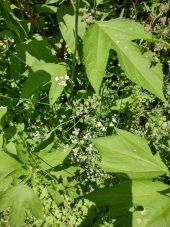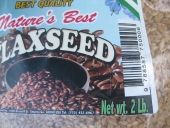
 7
7






'What we do now echoes in eternity.' Marcus Aurelius
How Permies Works Dr. Redhawk's Epic Soil Series








 6
6








'What we do now echoes in eternity.' Marcus Aurelius
How Permies Works Dr. Redhawk's Epic Soil Series








 6
6








'What we do now echoes in eternity.' Marcus Aurelius
How Permies Works Dr. Redhawk's Epic Soil Series








 4
4




'What we do now echoes in eternity.' Marcus Aurelius
How Permies Works Dr. Redhawk's Epic Soil Series
 4
4




Zone 6, 45 inches precipitation, hard clay soil












 4
4




'What we do now echoes in eternity.' Marcus Aurelius
How Permies Works Dr. Redhawk's Epic Soil Series








 4
4




'What we do now echoes in eternity.' Marcus Aurelius
How Permies Works Dr. Redhawk's Epic Soil Series
 2
2




"The only thing...more expensive than education is ignorance."~Ben Franklin. "We can easily forgive a child who is afraid of the dark; the real tragedy of life is when men are afraid of the light." ~ Plato








 5
5




 Oh, and ragweed don't have a woody part separate from it's bark.
Oh, and ragweed don't have a woody part separate from it's bark.
'What we do now echoes in eternity.' Marcus Aurelius
How Permies Works Dr. Redhawk's Epic Soil Series








 4
4




'What we do now echoes in eternity.' Marcus Aurelius
How Permies Works Dr. Redhawk's Epic Soil Series








 3
3




'What we do now echoes in eternity.' Marcus Aurelius
How Permies Works Dr. Redhawk's Epic Soil Series
 4
4




"The only thing...more expensive than education is ignorance."~Ben Franklin. "We can easily forgive a child who is afraid of the dark; the real tragedy of life is when men are afraid of the light." ~ Plato
 5
5




With appropriate microbes, minerals and organic matter, there is no need for pesticides or herbicides.
 3
3




.May Lotito wrote:What are you going to use these fibers for?
I went outside to pull a few giant ragweeds and in just a few minutes I was having sore throat and runny nose. They grew amid my bamboo so stems are all slim and tall, no branch up to 6 ft. I am thinking just like flax, slender and straight stems will yield better fiber.
With appropriate microbes, minerals and organic matter, there is no need for pesticides or herbicides.

 6
6




Some places need to be wild
 3
3




Faye Streiff wrote:
.May Lotito wrote:What are you going to use these fibers for?
I went outside to pull a few giant ragweeds and in just a few minutes I was having sore throat and runny nose. They grew amid my bamboo so stems are all slim and tall, no branch up to 6 ft. I am thinking just like flax, slender and straight stems will yield better fiber.
May, try goldenrod tea as an antidote.
Zone 6, 45 inches precipitation, hard clay soil




 1
1




Life on a farm is a school of patience; you can't hurry the crops or make an ox in two days.
Henri Alain

|
He does not suffer fools gladly. But this tiny ad does:
The new kickstarter is now live!
https://www.kickstarter.com/projects/paulwheaton/garden-cards
|







